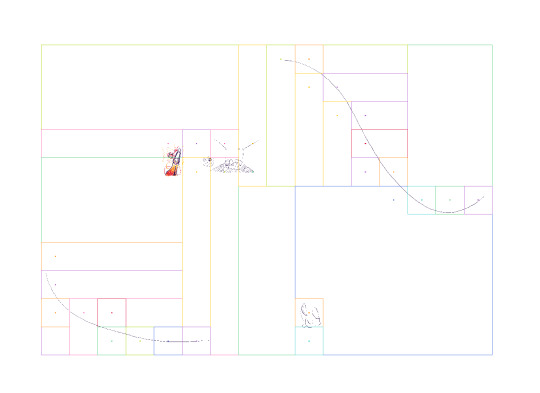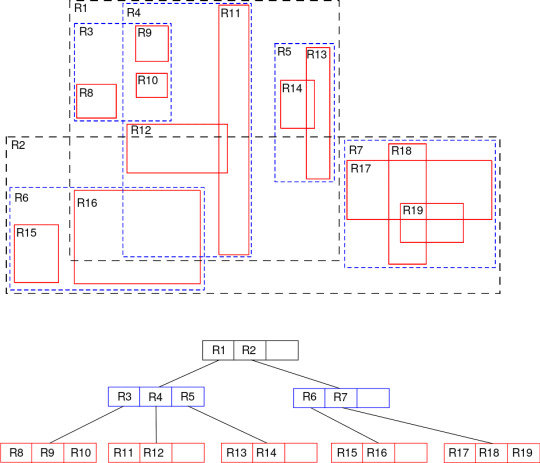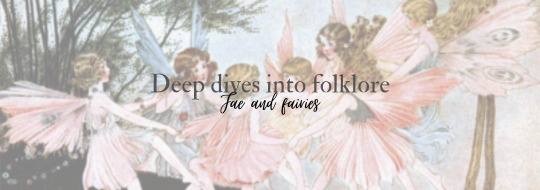#multi-dimensional-arrays
Explore tagged Tumblr posts
Text
silly Doctor Who headcanons !!
for every regeneration, The Doctor and The Master/Missy have a truce for a day, or however long it takes, to complete a game of chess. often these end up being a "best of..." situation that leads them both down an array of increasingly absurd challenges to name a victor. some notable ones include Eleven suggesting a space hopper race, Twelve and Missy competing in a battle of the bands, and even Thirteen dominating in her speed stacking skills against Dhawan!Master.
The Doctor has to keep track of what communication device is from what era that companion originally lived in and finds it funny the way humans have evolved the idea of telephones to mobiles to smartphones for the simple act of communication (they still think its funny calling their multi-dimensional time travelling space ship a telephone kiosk however)
when asked what their favourite colour was, The Doctor spoke gallifreyan to describe a colour only time lords could perceive, but the TARDIS not translating it telepathically meant the companion just had The Doctor speak what sounded like mathematical gibberish to them, smile, and then proceed to carry on like normal.
The Doctor is actually terrified of cars and thinks it is incredibly brave that humans launch giant metal objects with the power of combustion around for transport, despite themselves using a perpetually stabilised collapsing star to power their space and time breaking capsule. when questioned how safe the TARDIS engines actually were, all they could do was laugh nervously and mention how time lords were adventurous mechanics.
there are actually a number of stray cats and dogs that have wandered in, the TARDIS finding them all cute beyond measure and thinking it would help The Doctor feel less lonely. however, the dimension inside being almost infinite, they tend to get lost and are never seen again. but every so often, The Doctor just finds a random adorable animal looking up at them expecting pets.
#pls add your own if you have any!!#doctor who#dw#peter capaldi#matt smith#christopher eccleston#david tennant#jodie whittaker#ncuti gatwa#nuwho#classic who#ninth doctor#tenth doctor#the eleventh doctor#twelfth doctor#thirteenth doctor#fourteenth doctor#fifteenth doctor#doctor who headcanon
601 notes
·
View notes
Text
in my new programming language:
whitespace--including line breaks and space characters--is forbidden
arrays are indexed starting at -1. they still go up, btw. they just start at -1.
multi-dimensional arrays are indexes boustrophedon-style. every other row is indexed in the opposite direction.
to keep file sizes down, there are no comments
not only do you need a header file for every class declaring variables and functions, you need a footer file with a statement explaining how this class complies with the Paperwork Reduction Act of 1995.
to encourage concise code, variables are limited to two letters. the first letter determines the type, and the second letter must be unique. also, you are limited to 256 variables at one time, because nobody really needs more than that.
the compiler will attempt to guess whether the value you have typed is decimal, hexidecimal, binary, etc. you may not provide any hints. it needs to do this on its own, for personal growth reasons.
319 notes
·
View notes
Text

Researchers create a three-dimensional multi-focus laser for glass micro-sculpting
Glass materials are widely used in optical and optoelectronic devices due to their low cost and excellent mechanical and optical properties. Among them, glass concave/convex linear structures with feature sizes ranging from several micrometers to hundreds of micrometers find intensive applications. For instance, cylindrical microlens arrays and microgroove arrays with various cross-sections are widely used for light field modulation, microfluidic chip flow channels, and optical module connectors. The inherent hardness, brittleness and low thermal conductivity of glass make it highly challenging to fabricate large-area glass microgrooves, especially those with tunable cross-sectional shapes. As a non-contact subtractive manufacturing method, ultrafast laser processing plays an important role in the fabrication of glass microstructures. The extremely high peak power density and short pulse duration time help to achieve small thermal impact, few defects and high precision.
Read more.
10 notes
·
View notes
Text

J03 Hunter Class destroyer & F16A Marathon class Heavy Cruiser, scaled for playing Mobile Frame Zero: Intercept Orbit. Inspired by the MCRN Donnager battleship from The Expanse.
---

The J03 Hunter Class destroyer, designed and built by the First Great Expansion megacorp Northern Sky, was a dedicated seek and destroy platform designed to overrun targets with a single minded ferocity. The class often performed picket duties or acted as forward deployed scouts, but it truly shined when it was able to engage in one sided fights, chasing wounded and/or isolated prey, and was known for pack hunting, multi-dimensional pincer attacks that drove a target into a vector for one of the destroyers to ram for a killing blow.


Its primary weapons were two side mounted dual railgun chase armaments, a capable enough system to damage enemy light to mid armor while being relatively easy to maintain. In lieu of thick hull plating which would have slowed the class, a multi-layered defense of PDGs and defensive missile turrets (capable of firing anti-missile missiles as well as chaff/dazzlers) allowed the destroyer to capitalize on its speed for both aggressive as well as defensive maneuvering. The forward section of the class was also heavily reinforced for ramming, and was painted to evoke the grinning maw of an apex predator like aircraft nose art of old.

The F16A Marathon class heavy cruiser on the other hand was a dramatic scaling up of the venerable Hunter class, albeit with a much different mission in mind. This heavy cruiser was intended for extended solo operations such as deep space exploration, strategically hidden emergency reinforcements, or advanced system scouting; as such it needed the legs to operate on its own, carrying enough bullets, beans, fuel, and propellant to maintain happy and fully operational battle stations. Its massive armored bulk was supported by no less than eight engines, the primary four of which were over engineered for safety's safe; a catastrophic failure when the ship was millions or billions of miles from the nearest safe harbor or ally was a serious concern. Its primary weapons were two 3-barrel cannon launch missile turrets with exceptional firing arcs, that offered an impressive range of initial firing arcs. By forgoing traditional VLS cells or launch tubes, the Hunter class sacrificed volley mass and refire rate for exceptional accuracy and engagement ranges. The Marathon also mounted the same model PDGs and defensive missile turrets the Hunter class did, though with double the number of both included (later 'B' and 'C' variants instead tripled the number of missile turrets as instability throughout human and Ijad space began leading to large scale space fleet combat).


A Marathon could also easily have served as a flagship for a military or megacorp fleet, although the newer 'B' (improved C&C facilities and outsized comms arrays) and 'C' (mobile frame hangar and catapult) hulls were better suited for modern mobile frame centric combat. Despite its age, the original Marathons were still powerful forces to be reckon with, should an organization have had the resources and manning to support one. Unfortunately, as space combat transitioned from one-sided curb stomp beatdowns between well funded militaries and upstart colonists with more bravado than brains (not to mention the occasional megacorp skirmish over resources) to full on interspecies warfare between the human goverments and the Ijad forces with Free Colony Cells not only popping up more frequently every day, but also increasingly better trained and better geared, the heavy cruiser saw the end of its heyday. While the purpose built combat ship was ton for ton superior to most converted civilian vessels used by free colonists, as well as the oddly alien designs the Ijad introduced, the increase of space based mobile frame companies closed the gap enough that many militaries decided that the class just wasn't worth the manning and logistics to field any longer, in favor of smaller, more modern light cruisers, battle cruisers, and carriers that came to dominate The Second Great Expansion.

71 notes
·
View notes
Text
On a multi-dimensional (>2) array, what would you expect/want transposition to do?
This is mostly a survey of personal preference. and to be clear, I've seen all of these options implemented except one (can you guess which?) among various programming languages and libraries. pytorch alone has four of these at least.
feel free to explain your choice in the notes!
3 notes
·
View notes
Text
Python Libraries to Learn Before Tackling Data Analysis
To tackle data analysis effectively in Python, it's crucial to become familiar with several libraries that streamline the process of data manipulation, exploration, and visualization. Here's a breakdown of the essential libraries:
1. NumPy
- Purpose: Numerical computing.
- Why Learn It: NumPy provides support for large multi-dimensional arrays and matrices, along with a collection of mathematical functions to operate on these arrays efficiently.
- Key Features:
- Fast array processing.
- Mathematical operations on arrays (e.g., sum, mean, standard deviation).
- Linear algebra operations.
2. Pandas
- Purpose: Data manipulation and analysis.
- Why Learn It: Pandas offers data structures like DataFrames, making it easier to handle and analyze structured data.
- Key Features:
- Reading/writing data from CSV, Excel, SQL databases, and more.
- Handling missing data.
- Powerful group-by operations.
- Data filtering and transformation.
3. Matplotlib
- Purpose: Data visualization.
- Why Learn It: Matplotlib is one of the most widely used plotting libraries in Python, allowing for a wide range of static, animated, and interactive plots.
- Key Features:
- Line plots, bar charts, histograms, scatter plots.
- Customizable charts (labels, colors, legends).
- Integration with Pandas for quick plotting.
4. Seaborn
- Purpose: Statistical data visualization.
- Why Learn It: Built on top of Matplotlib, Seaborn simplifies the creation of attractive and informative statistical graphics.
- Key Features:
- High-level interface for drawing attractive statistical graphics.
- Easier to use for complex visualizations like heatmaps, pair plots, etc.
- Visualizations based on categorical data.
5. SciPy
- Purpose: Scientific and technical computing.
- Why Learn It: SciPy builds on NumPy and provides additional functionality for complex mathematical operations and scientific computing.
- Key Features:
- Optimized algorithms for numerical integration, optimization, and more.
- Statistics, signal processing, and linear algebra modules.
6. Scikit-learn
- Purpose: Machine learning and statistical modeling.
- Why Learn It: Scikit-learn provides simple and efficient tools for data mining, analysis, and machine learning.
- Key Features:
- Classification, regression, and clustering algorithms.
- Dimensionality reduction, model selection, and preprocessing utilities.
7. Statsmodels
- Purpose: Statistical analysis.
- Why Learn It: Statsmodels allows users to explore data, estimate statistical models, and perform tests.
- Key Features:
- Linear regression, logistic regression, time series analysis.
- Statistical tests and models for descriptive statistics.
8. Plotly
- Purpose: Interactive data visualization.
- Why Learn It: Plotly allows for the creation of interactive and web-based visualizations, making it ideal for dashboards and presentations.
- Key Features:
- Interactive plots like scatter, line, bar, and 3D plots.
- Easy integration with web frameworks.
- Dashboards and web applications with Dash.
9. TensorFlow/PyTorch (Optional)
- Purpose: Machine learning and deep learning.
- Why Learn It: If your data analysis involves machine learning, these libraries will help in building, training, and deploying deep learning models.
- Key Features:
- Tensor processing and automatic differentiation.
- Building neural networks.
10. Dask (Optional)
- Purpose: Parallel computing for data analysis.
- Why Learn It: Dask enables scalable data manipulation by parallelizing Pandas operations, making it ideal for big datasets.
- Key Features:
- Works with NumPy, Pandas, and Scikit-learn.
- Handles large data and parallel computations easily.
Focusing on NumPy, Pandas, Matplotlib, and Seaborn will set a strong foundation for basic data analysis.
8 notes
·
View notes
Text
wormboard devlog 2/?

"maybe bintree would work better?"
i'm probably not gonna try and make all of these as illustrated and high-effort as the first one, but here are a few things i've done since then:
it's finally possible to erase lines
the graphical information (quadrilateral vertices) needed to render a line on screen is now cached, instead of being recalculated every frame
improved quality of quadrilateralization (less pinching around sharp angles)

most importantly, after many, many failures, i got the k-d tree grid working! i also figured out what was causing most of the bugs with that first attempt outlined in devlog 1 — brushstrokes were held in a big dynamic array, and then grid cells had references to those. so whenever the brushstroke array needed to be resized, all those references would be invalidated.
the issues i had trying to build the k-d tree came from a similarly dumb problem ... basically, due to an oversight brushtrokes would always be added to the root node in the center of the canvas, no matter where they actually are. then when the time came to erase them, they'd be removed from all the logical places — but not from the aberrant (0, 0) tile. so everything would seem fine, until i zoomed out and these "ghost lines" would pop into existence as the center tile entered the screen.
i put that off for a while, until changing that dynamic array of brushstrokes i mentioned earlier into a linked list (to keep references consistent, make insertion/deletion easier, etc), at which point ghost lines' appearing would kill the program immediately.
a whole nightmare to debug, that... but i did it! i got it!
but i got curious. i wanted to know if there was a way to keep the tree balanced, for better performance. and after spending so many hours getting this implementation to work fine, i learned about r-trees.

so the thing with k-d trees, and bintrees, quadtrees, really the majority of spatial indexing techniques, is that they're designed to store points, infinitely small positions in space. and while each individual brushstroke is made up of points, we don't want to store those in the canvas partitioning structure. as far as it knows, each brushstroke is really more like a rectangle, large enough to hold all the individual points inside it.
and, to quote "R-TREES. A DYNAMIC INDEX STRUCTURE FOR SPATIAL SEARCHING," a paper old enough that its title is in all caps:
However, traditional indexing methods are not well suited to data objects of non-zero size located in multi-dimensional spaces. In this paper we describe a dynamic index structure called an R-tree which meets this need, and give algorithms for searching and updating it.
meaning that, while i have a system in place that works pretty well, that i've made capable of doing what i need, there's a better way. there's a solution better suited to the problem.

from what i've been able to learn so far r-trees are very simple to search through — hence why they're faster — but the construction. ohhh the construction. the insertion algorithms. oh no...
#wormboard#devlog#rw five pebbles#rw seven red suns#and there's another higher-performing variant called the r*-tree#which i hear is even a little bit _more_ complicated to construct#pray for me#there's also the aspect that brushstrokes can overlap#and have to do so in a consistent order#but i'm able to just use the depth buffer for that
7 notes
·
View notes
Text

💫🌺Hand-Braided Scalloped Chindi Cotton Area Rug🌾
🌱Chindi rugs are known for their colorful, lively designs. The fabric scraps used in their creation come in a wide array of colors, patterns, and textures, resulting in rugs that are often bold, eclectic, and full of character. The mix of fabrics gives these rugs a distinctive, multi-dimensional look that can add personality to any room. The fabric scraps are tightly woven or braided together, making the rug strong enough to withstand foot traffic.
#rugs#homedecor#interior#handmade#decor#carpets#home#carpet#arearugs#interiors#runner rug#lovely runner#homestar runner
2 notes
·
View notes
Text
Why Canadian Companies Prefer Digital Marketing Agencies over In-house Teams

In the ever-changing digital landscape of Canada, companies big and small have to make one very important decision: develop an in-house digital marketing team or hire the services of a dedicated agency. Far from being a routine operational issue, this choice has great implications for its competitive position, market relevance, and general growth trajectory. With the digital platform becoming increasingly complicated and the stakes of online visibility soaring high, a trend has definitely been witnessed across Canadian companies: that of choosing between the expertise and agility provided by digital marketing agencies over in-house teams.
Expertise and Specialization
This has been one of the major reasons for the tectonic shift in the approach of Canadian enterprises. Digital marketing is not a monolithic discipline but a constellation of specialized areas, each with its own particular demands in expertise. From SEO virtuosos to social media savants, content marketing maestros to PPC prodigies, agencies house a cadre of specialists under one roof. Such an assemblage of talent allows businesses to tap into a wellspring of knowledge that would be prohibitively expensive and logistically challenging to cultivate internally.
What is more, the digital marketing field keeps on changing 24/7, since that is when algorithms, best practices, and consumer behaviors change at the speed of light. This places agencies in a much better place to be updated due to their focus and the heterogeneity of their client base. They undertake heavy continuous learning and serious means of professional development investment to ensure that their strategies remain at the cutting edge of industry changes. This means a commitment to staying current translates into better marketing solutions for their clients-more effectively and innovatively.

Agency versus in-house: financial implications are huge and multi-dimensional. At face value, the retainers or project fees associated with agency services might appear huge. However, a close look will reveal that this is not true on the cost-efficiency level. By outsourcing an agency, a business may significantly reduce overheads like salaries, benefits, office space, and equipment, which are kept by full-time employees.
The next strong economic case lies in the fact that it can make that great sense of scalability and flexibility. It eases the opportunity to adjust marketing spend against seasonal demands, special campaign needs, or fluctuating economies without getting into the complexities of hiring or drastically reducing an internal team. That elasticity of resource allocation permits better budget efficiency and implores optimization of Marketing ROI.
Technology and Tools
The digital marketing arena is the haven for sophisticated tools and platforms-most of which come with heavy price tags, coupled with steep learning curves. Agencies, able to use economies of scale, invest in a wide array of premium software and technologies that would be financially unviable for most individual businesses to acquire. From advanced SEO tools to full-service social media management platforms, agencies arm their clients with the technological arsenal needed to drive marketing effectiveness.
Besides tools, agencies often have state-of-the-art analytics and reporting. These systems allow for the granular tracking of campaign performance, consumer behavior, and ROI. Insights gained from these advanced analytics become the powerhouse that drives businesses into making data-informed decisions and fine-tuning their marketing approaches with strategy precision.
Strategic Objectivity
One of the most overlooked benefits of hiring a digital marketing agency is the fresh perspective it brings to the challenges a brand faces. Sometimes a company's internal teams, despite being quite familiar with the brand, can suffer from tunnel vision or be stuck in paradigms. Agencies, drawing on diverse experience across industries and markets, have become a fertile source of new solutions and unconventional creative approaches, which for those within the organization can be virtually invisible.
This objectivity extends to performance appraisal as well. Large agencies are usually held to very tight KPIs through which they are accountable to deliver measurable results. The setup ensures a very transparent culture of business betterment, whereby the agencies fall under pressure to prove their strategies right and value-proposition-valid on a regular basis.
Time and Resource Management
For most Canadian businesses, more so for the SMEs, the job of dedicating or committing resources to build and maintain a fully-fledged in-house digital marketing team is surely going to distract them from their core business activities. By outsourcing such functions to an agency, this energy is freed for product development, customer service, and other mission-critical activities.
Furthermore, more often than not, agencies are in a much better position than in-house units to implement marketing initiatives. With the established processes, loads of already-vetted resources on standby, and a lot of previous work to its credit, an agency can consequently save time throughout the process from conceiving of the strategy to launching the campaign. This agility is paramount in the fast-paced digital landscape, where usually the early bird catches the worm.

Many of these digital marketing agencies boast of having an extensive industry network, including influencers, media, and technology partners that can open various doors of opportunity to collaboration. Beta programs and early access to new marketing channels/features fall into this category. To Canadian businesses, this is quite an invaluable asset that networks with potential new customers.
Moreover, most agencies have good relations with key platforms, such as Google, Facebook, and LinkedIn, which provide them with the latest features, premium support, and, in some cases, almost privileged rates. More probably than not, such partnerships are passed on as tangible benefits to the clients to enhance the effectiveness and efficiency of their digital marketing initiatives.
As a sustenance of risks
The regulatory requirements associated with digital marketing, encompassing privacy, advertising standards, and the specific policies of these diverse digital platforms, make hazardous minefields for businesses. This adds further pressure on digital marketing agencies because they possess specialized knowledge and experience in ensuring that their clients work in conformance with these regulations. This becomes even more crucial in instances involving Canada, where there are regulations like CASL, which is anti-spam law dictating strict requirements on electronic messaging.
Additionally, the agencies adapt by nature through adaptation to market changes. Their diversified client bases and regular activities with businesses in various industries enable them to identify and respond to the change in consumer behavior, change in technology, or economic conditions very fast. Adapting to the situation at hand helps hedge against potential risks associated with sudden changes in the market which could render several marketing strategies irrelevant.
Performance and Results
What's arguably most convincing in the move towards agency partnerships is the attention to accountability and measurement of performance. Most of the agencies operate on performance-based models with clear KPIs and reporting structures that generate tangible means through which firms realize their marketing return on investment. In other words, therefore, the approach is results-based, with continuous optimization of marketing to align with business objectives.
As such, agencies can contribute to performing competitive benchmarking. With many years of experience across industries and data, they can paint a view for a business regarding its relative standing in digital marketing performance from its competition and industry benchmarks. Such a comparative perspective may also help them zero in on opportunities for performance improvement and areas of differentiation.
The Future of Digital Marketing Partnerships in Canada
The trend of Canadian businesses partnering with specialized marketing agencies is showing no signs of abatement in the evolving digital marketing landscape. The recipe combining experience, the advantage of being cost-effective, technological advances, and strategic value when working with an agency makes compelling economic sense. And, of course, in-house teams will always have their role; it's actually quite important for big organizations. The passed "advantages to this kind of approach are flexibility and comprehensive capabilities available to organizations of any size.".

The collaboration with a digital marketing agency is considered an investment in terms of growth strategy and competitiveness. Increasingly, this is a cost consideration that Canadian executives are factoring in as Canadian businesses strive to find their way through digital complexities—and as a result, a way to innovate the catalyst for success in the long term.
#Canadian businesses#Digital Marketing Partnerships in Canada#Digital Marketing in Canada#digital landscape of Canada#advanced SEO
3 notes
·
View notes
Text

シン• ゴジラ Shin Godzilla (Form X) [Evolved Space Monster]
“It's… Shin Gojira! That THING has returned!!”
“Its behaviour is different, it seems more reckless, vengeful. I would even say that it's… distressed at losing Biollante.”
After Biollante split from Shin Gojira's original SpaceGodzilla form, it left the Mutant in a weakened and vulnerable state after losing half of its mass. Although Shin Gojira was safe and protected by its minions in the pocket dimension, he nonetheless forced himself to adapt by ordering the Gojians and Krystalaks to attack him. It consequently mutated to harden and crystalise his scales into skeleton armour and strengthen his photon shields.
Adopting a form that closely resembled its previous fourth mutation, he began to focus his energy to be able to produce and even control black holes. The golden crown on his head, and shoulder crystals became a conduits to absorb and manipulate cosmic radiation at a more efficient and powerful rate.
Regaining his strength, Shin Gojira, although still deeply distressed by the loss of Biollante, pressed on with his plans to rebuild the Earth into his ideal ecosystem. He created a portal to the Monarch Base in Antarctica via the captured Gojiran, Adam, who then conducted the portal to open in front of the MechaGodzilla, Kiryu which had now become overcome with the flesh within it.
This portal allowed Shin Gojira to briefly come through to Earth and place his soul inside Kiryu. ShinGoji dragged a huge hoard of Krystalaks and Shin Warriors through after him, rampaging and destroying most of Outpost 32. The portal however was shattered when Dr Serizawa killed Adam in an attempt to stop Shin Gojira from coming back. Shin Gojira's soulless body was sucked back into the pocket dimension however it was too late as Kiryu awakened and stared down at Serizawa with blood-red eyes. Flesh began to grow over the mech and consume it completely, reconstructing Shin Gojira's original body, with the metal skeleton of Kiryu. Now a fusion of the Mech and Shin Gojira’s flesh, the subsequent fusion is named: ShinKiryu or Shinryu.
Height: 105m
Attributes:
Armour-like scales, nigh impenetrable exoskeleton-like structures
Crude shapeshifting abilities
Ability to create and control inter-dimensional portals
Thermal/Flame
Radar Array
Geokinesis
Reactive Photo Shield
Mind Control/Suggestion in sentient beings
Levitation/Flight
DNA/RNA vampirism
Has actual arms now
Personality:
After the death of Biollante, the closest being Shin Gojira had a genuine bond with, he became unhinged and his motives moved from terraforming Earth to annihilation of humanity.
Now driven to revenge, Shin Gojira began lashing out at it’s own offspring and prone to even more violent outbursts.
No longer producing offspring with mitosis, Shin began honing and focusing his psychic abilities, allowing him to influence humans at Outpost 32 and gain access to MechaGodzilla Kiryu.
Although not perfect, Shin’s abilities to control Kiryu slowly began to grow and allowed him to accelerate the growth of flesh from his lost dorsal plates.
Shin subsequently placed his soul or mana into the golden crystal crown in his head to transfer into Kiryu.
Shin Gojira’s soulless body that was pulled back into the crystalline dimension continued to mutate and evolve, despite the fact that it was brain dead, mutating into a grotesque multi-headed horror.
__________________
FIRST | PREVIOUS | NEXT __________________ SHIN MONSTERVERSE INDEX
20 notes
·
View notes
Text
Can I use Python for big data analysis?
Yes, Python is a powerful tool for big data analysis. Here’s how Python handles large-scale data analysis:

Libraries for Big Data:
Pandas:
While primarily designed for smaller datasets, Pandas can handle larger datasets efficiently when used with tools like Dask or by optimizing memory usage..
NumPy:
Provides support for large, multi-dimensional arrays and matrices, along with a collection of mathematical functions to operate on these arrays.
Dask:
A parallel computing library that extends Pandas and NumPy to larger datasets. It allows you to scale Python code from a single machine to a distributed cluster
Distributed Computing:
PySpark:
The Python API for Apache Spark, which is designed for large-scale data processing. PySpark can handle big data by distributing tasks across a cluster of machines, making it suitable for large datasets and complex computations.
Dask:
Also provides distributed computing capabilities, allowing you to perform parallel computations on large datasets across multiple cores or nodes.
Data Storage and Access:
HDF5:
A file format and set of tools for managing complex data. Python’s h5py library provides an interface to read and write HDF5 files, which are suitable for large datasets.
Databases:
Python can interface with various big data databases like Apache Cassandra, MongoDB, and SQL-based systems. Libraries such as SQLAlchemy facilitate connections to relational databases.
Data Visualization:
Matplotlib, Seaborn, and Plotly: These libraries allow you to create visualizations of large datasets, though for extremely large datasets, tools designed for distributed environments might be more appropriate.
Machine Learning:
Scikit-learn:
While not specifically designed for big data, Scikit-learn can be used with tools like Dask to handle larger datasets.
TensorFlow and PyTorch:
These frameworks support large-scale machine learning and can be integrated with big data processing tools for training and deploying models on large datasets.
Python’s ecosystem includes a variety of tools and libraries that make it well-suited for big data analysis, providing flexibility and scalability to handle large volumes of data.
Drop the message to learn more….!
2 notes
·
View notes
Text
Deep dives into folklore: Fae and fairies

The concept of fae, or fairies, has captivated human imagination for centuries, evolving from ancient folklore to a diverse array of representations in modern literature. These mythical beings, often associated with enchantment, magic, and the supernatural, have undergone a fascinating transformation that reflects changes in human culture, beliefs, and societal values. The evolution of fae in folklore and literature can be traced through various stages, each influenced by historical, cultural, and literary factors.
The origins of fae can be found in ancient folklore from different cultures around the world. In many early societies, supernatural beings were believed to inhabit the natural world, controlling the forces of nature and acting as intermediaries between humans and the divine. These beings were often revered and appeased through rituals and offerings. In Celtic and Norse mythology, for instance, creatures like the sidhe and the elves were considered guardians of the natural world and were deeply intertwined with the land and its magic.
The medieval period saw the development of romanticized portrayals of fae. In this era, literature often idealized the supernatural and the mysterious, portraying fairies as elegant, ethereal beings with both benevolent and mischievous tendencies. These fae became associated with chivalry, courtly love, and the mysterious beauty of nature. They were depicted as enchanting figures who could offer wisdom, protection, or curses. Works like Sir Orfeo and Geoffrey Chaucer's "The Wife of Bath's Tale" highlight the romanticized aspects of fae beings, connecting them to themes of love and desire.
With the Enlightenment came a shift in how fae were portrayed. As scientific thought gained prominence, the belief in supernatural creatures waned. However, the Victorian era saw a resurgence of interest in fae, albeit with altered meanings. During this period, fae often represented hidden desires, societal norms, and moral allegories. Authors like William Shakespeare and J.M. Barrie infused their works with intricate fae characters, such as Puck in "A Midsummer Night's Dream" and Peter Pan in "Peter Pan." These characters reflected the complexities of human nature and societal constraints, functioning as both magical entities and symbols of psychological and moral dilemmas.
In contemporary literature, the evolution of fae continues, reflecting the diverse perspectives and concerns of modern society. Authors like Holly Black and Cassandra Clare have reimagined fae as complex, multi-dimensional beings who navigate issues of identity, power, and ethics. These fae inhabit intricate worlds that challenge conventional notions of good and evil, often mirroring contemporary discussions about diversity, representation, and the blurred boundaries between reality and fantasy.
The evolution of fae in folklore and literature showcases the dynamic nature of myth and storytelling. From their mystical origins in ancient folklore to their romanticized portrayals in medieval times, symbolic roles in the Enlightenment and Victorian eras, and contemporary reimaginations, fae have consistently adapted to reflect the concerns and values of their respective eras. Their enduring appeal lies in their ability to evoke wonder, explore human nature, and serve as vehicles for cultural expression. As long as human imagination continues to flourish, the evolution of fae will undoubtedly persist, shaping and reshaping these enchanting beings for generations to come.
#writeblr#writers of tumblr#bookish#writing#booklr#fantasy books#creative writing#book blog#ya fantasy books#ya books#folklore#myths#legends#literature#fae#fairies#deep dives into folklore
12 notes
·
View notes
Text

Researchers realize controlled synthesis of Au-Ag heterodimer arrays for high-resolution encrypted information
Recently, a research group from Hefei Institutes of Physical Sciences of Chinese Academy of Sciences, developed an antielectric potential growth method for large-area preparation of Au-Ag heterodimer arrays. The prepared patterned Au-Ag dimer arrays have information resolution up to the nanometer scale due to the multipolar coupling resonance between the Au and Ag components. The research results were published in Nano Letters. The localized surface plasmonic resonance effects endow plasmonic nanoparticles (NPs) with the ability to modulate light-matter interactions, enabling patterned plasmonic arrays to encode complex colors and polarization patterns. Among them, the plasmonic heterogeneous arrays, which are composed of heterogeneous plasmonic NPs arranged periodically, have multi-dimensional optical tunability. It is conducive to the realization of high-resolution information encryption.
Read more.
5 notes
·
View notes
Note
Do you have any advice for people that want to get into programming?
oops, we've been archiving old art today and got to this late, apologies!
so i'm going to assume that you mean as a hobbyist and not as a professional because i am only a hobbyist who likes coding simple websites. i think depending on how serious you want to take programming there's a lot of different potential answers to this question and everyone's different, so take me with a grain of salt, but i can answer from my own experience!
i earnestly think the best way to start with programming is to start making a project that aligns with interests you already have, and keep it small. i don't mean jump into that massive dream video game immediately, that'll lead to burnout fast! for me it was blue moon falls, taking it one page at a time. i slowly graduated from struggling on basic html/css stuff to making decently complex javascript calculators. my love for pokemon really carried me through a lot of the parts where i felt stuck or frustrated, so if you have an interest like that and can make something for it, even if it's silly, i highly recommend it! not only does it help with motivation but it leads you to naturally picking up new skills as you go. for instance, i learned how to intimately work with multi-dimensional arrays while working on my gen 1 pokemon shiny tool!
also, please do remember that it's okay to struggle on parts that other people seem to have an easy time with, that doesn't make you a bad programmer. and it's okay to ask for help! google and stack overflow are your friends - even professional programmers (including the likes of my IRL father) will tell you that programming, even professionally, is partially just "professional googling." it is normal to be confused and it is normal to have to cobble together code by copy/pasting off of stack overflow and w3schools and whatever, you are doing it "right" ww (there is no true right or wrong, everyone learns differently)
if you have any more specific questions i'm always open to talking about neocities and stuff!
7 notes
·
View notes
Text
Magic, Magical Theory, and the General Study of Circles
Magic, in essence, is a way to give the underlying fabric of reality a command, one which it follows to the best of its ability. The simplest (though not only) way to do so is to use the language of magic, the technical name for which is Arcscribe. Arcscribe is a shortcut to commanding magic, the truest and most bare-bones ways to do so being so unfathomably complicated that only the most well-studied scholars on the matter can even parse basic spells.
Thus, Arcscribe is the means used to craft and cast spells. Arcscribe works by taking the projected energy of a circle and translating it to raw magical understanding, which is then carried out by the framework of the universe. Technically, this is fractionally slower than raw manipulations of this framework, the compiling and translation process of Arcscribe taking microseconds. In most settings, this means little, but can obstruct or alter the results of certain magical tasks or experiments.
The basics of Arcscribe involve what are called “structures.” A structure of a spell using Arcscribe is a geometric shape, most commonly a circle. These contain the rest of the spell’s components and manage the process of translation, and generally hold the entire spell together. A structure also determines the complexity of a spell. A circle structure can handle complexity of up to 800 operations, give or take depending on the specifics of the operations.
As a general, but often broken rule, the more “sides” to a structure, the higher the complexity it can handle and the more magical energy it consumes. Semi-circular, triangular, square, pentagonal, and hexagonal structures all increase in complexity over the shape before. The cost of even square structures can become too high for many apprentice mages, however, so many instead use linking to satisfy complex but cheap spells.
Non-uniform or uneven structures are typically not advised to be used, as they can introduce intended exceptions or errors to the spell, and can increase the complexity of the spell. This includes but is not limited to: non-equilateral triangular structures, rectangular or non-square quadrilateral structures, non-circular monogons, etc. Some non-regular polygonal structures are viable for use as structures as they have exceptional properties when incorporated in some spells, such as the “cog” structure or three-dimensional structures. These are typically the upper-end of the achievable complexity scale, however.
Multi-sided structures may serve as too advanced for many novices, however. In this case, a mage might use “linking.” Linking is the process of joining two magical circles using a special structure, the link. A link is a monogonal structure that is distinct from circles, as its only purpose is to join two magic circles. To use a link, one must draw two or more circles and connect the structures of the two with a single line. This line, the link, joins the functions of the circles together, expanding the capabilities of a single casting. The complexity of a link is miniscule, and the increase of using two or more circles is only additive, as opposed to an altered structure which may be multiplicative or exponential.
This does not mean multi-sided structures are completely useless. Linked spells require a much greater ability for memorization, as their formulas are much more complicated (not in the sense of magical complexity that multi-sided structures introduce) and require good memorization or improvisational skills. This would typically only apply to incredibly fine workings or grand-scale spells, but it is good to know the merits of multi-sided structures as they come up frequently in high-level Arcscribe practice.
When spells are linked, this creates what is known as an “array.” Linked arrays may contain more than two spells. In fact, they can contain any number of independent structures, and not all must be linked to one another. A solid array will usually consist of a “driver,” a central structure which handles the workings of all of the linked circles. Most structures will be directly linked to said driver. A driver usually takes in all of the different pieces of the array and decides what to do with them.
For example: You might have an array of three structures. One of which generates a ball of fire, with no real position given. The second structure would be an instruction on shooting that ball of fire (or any other projectile) in a perpendicular direction to the circle that generates it. The driver would then take the fireball structure and cast it in conjunction with the structure that shoots it forwards.
Of course, this is a massive oversimplification. While a primitive version of what was described above could be made with three structures, an effective or practical version would take at least six separate structures, with three total sub-structures as well. But what, exactly, is a sub-structure?
A sub-structure is simply a structure within a structure. Sub-structures are distinct from linked structures in that they are intricately tied to the workings of a structure. Thus meaning that if it was removed, it would cease to function. Sub-structures may also not be referenced by other structures, only by the super-structure that contains the sub-structure. This means that sub-structures are “invisible” to even linked structures. All information passed between a sub-structure and linked structures must be done through the super-structure.
A super-structure is the name of a structure that contains a sub-structure.
Sub-structures may also have their own sub-structures. Nested sub-structures like this are difficult to memorize and keep track of, as well as increasing the complexity a noticeable amount. Nested sub-structures are given names matching those of metric meters. A sub-structure of a sub-structure is a deci-structure. Then a centi-structure, milli-structure, micro-structure, etc.
Using sub-structures might seem counterintuitive. Communication between all parts of the array is a useful thing, right? Which, yes. It usually is. However, there are two main reasons why one would use a sub-structure.
The sub-structure might be a volatile, dangerous piece of script. Sometimes, even the slightest oversight may have a disastrous consequence for a spell’s working. If a linked structure comes into contact with script that should only be communicating with a single structure, it can harm the entire spell, creating backlash, wild magic, or an entirely new spell that you don’t want. Sub-structures guarantee that a structure can only communicate with parts of the array.
Counter-workings, spells created to block or harm other spells, have a much more difficult time breaking spells created with sub-structures. They require establishing communication with the super-structure and gaining access to the sub-structure through them. This makes weaving a counter-working into a spell much harder and more time-consuming. It also means a successful counter-working is less likely to cause any of the repercussions described in reason #1.
For example: Let us describe a more practical version of the fireball spell.
Our first structure will be our driver, which we will describe last. Second, we need the fire. While the act of shaping fire into a ball could be done within this structure, it would leave us without any way to customize this spell to suit our needs later, so the ball shape will be contained within its own structure. Instead, this structure will simply generate a large swathe of fire.
Third, the shape. This will shape any projectile into a general “ball” shape. This would be a super-structure, as well. The sub-structure we will want to place into this structure would be the specification of energy-based spells. This sub-structure could be its own structure, probably linked to the ball shape structure instead of the driver, but dealing with shaping energy this way is an unsafe practice to leave on its own.
Fourth, a safety measure. Spells dealing with destructive forces should not be taken lightly. There are many ways to do this, but the easiest and lowest complexity for our situation would be to repel heat away from our body. This effect will be in place for only a brief moment, any longer would require a multi-sided structure to maintain.
Fifth, our “throw” structure. This will grant an object momentum perpendicular to the fireball’s circle of origin. This structure will also contain a sub-structure, one which alters the “object” classifier and may move a magical point instead.
Sixth, we create the aforementioned magical point. This magical point exists as a one-dimensional non-existence. It has no mass, density, or any other quantifier. It exists only as a reference position within 4D space. The final sub-structure will be placed on this point structure. It will tether the point to be relative to whatever the closest celestial body is. This means that instead of rushing off at tens of thousands of miles per hour into deep space, it stays relative to whatever the caster might be inhabiting at the moment.
Our driver will begin repelling heat for less than a second, easily enough time to get the spell cast. Then, our point is created right before our fire. The fire is compressed by the ball shape structure, and then tethered to the point. Lastly, we throw the point in the direction we want. The fireball alone won’t actually do much, it’ll act as if a regular puff of fire with no consistent fuel source would and burn out after a few seconds. We also haven’t commanded the point to ever stop, so it will fizzle out the moment the spell does. Ideally, we would also have the fireball burst on impact to create the proper explosion effect. A more advanced and complete version will be included alongside the illustration for both the earlier fireball example, as well as this one.
[illust. A three-structured array for a basic fireball spell.]
[illust. A six-structured array for a functional fireball spell.]
[illust. A nine-structured array for an advanced fireball spell.]
Free Excerpt
Kim, Mira. A Quickstart Guide to Basic Magimatics, Julian, Dallas, 2029.
Drawing or Projecting? An Analysis.
In Arcscribe, as well as many other magic-languages, there are two main ways of using the script. Each one has their own merits and uses, with some mages preferring one over the other, even scorning users of the alternate method. The subject has become a somewhat heated debate, so I have decided to look into the strengths of each practice to attempt to lay the arguments on the table.
Drawing, the act of physically writing the script of Arcscribe into some kind of surface. The act alone obviously does not generate magic, instead the energy for the spell to activate must be given by a magically-awoken individual. The action of empowering an array is done by touch, with only certain magical artifacts or runestone-blessings being capable of bypassing this rule. Drawing is typically what most spellcasters and mages start with, as it is less cost-intensive, has a slightly lower complexity, and is more forgiving than projection.
Projection, on the other hand, is the act of drawing magic into the requisite shape to form a spell. It may be done without tools or surfaces to draw on, as well as can even have a small distance between the caster and the circle. Projection is usually much quicker than drawing, able to be done within only seconds and is performed with very little somatics. Movements and gestures do play a huge part in the act of spellcasting, even with projection, but spells with lower complexity may be cast with little to no movement at all.
One of the largest issues with projection is its difficulty. Anyone capable of casting may project a circle of course, but a projected circle requires memorization of the desired spell formula. A misremembered line or stroke could cause a botched casting and ruin the entire spell. Alternatively, the caster could come up with their spell formula as they project the circle. Expectedly, this is even more difficult than memorization as it requires a perfect understanding of spell interaction and writing.
So both methods of casting spells seem to be very useful in their own regards, their differences are where the points of contention come into play. Certain practitioners of exclusively drawn magic claim that projection is a way to bypass in-depth study of spell formulas. This is to say that they believe projection-oriented casters do not care about the method of casting spells, only the results. Whereas some Projection casters believe that drawn magic is impractical in daily use, that the time-cost-effect relationship of drawn magic makes it archaic or basic.
Of course, neither of these opinions hold much weight in actual discussions of magical theory. Discussions of one style’s merits are common and welcome in academic debate, but any practiced scholar of magic understands the needs and requirements of both forms of casting. What I am proposing in this essay is to take an in-depth look at the differences between both drawn arrays and projected ones.
Excerpt from Drawing or Projecting? An Analysis, by Zoe Redd, Coauthored by Finn Hanning
What The Hell Even Is Complexity?
Alright so I’ve started to notice that whenever I make a post about drawing magic or spells I’ve been working on, people in the notes have been getting mixed up on what exactly “Complexity” means. I figured I’d try to educate as many people as I could, seeing as this is becoming a regular thing for my replies and reblogs.
So first, what isn’t complexity?
Complexity is not just how complicated a spell is to remember or learn.
Complexity is not how much energy is used to cast the spell.
Complexity is not how much of the universal framework is being altered by a spell (I’m not gonna explain the framework here, @catgirltheseus made a really good post about it so go read that and share it or whatever).
Complexity is actually a technical term used to denote how many operations a spell is performing at a given time. But you might be thinking “Sofie, what is an operation?” Which I’m getting to, you dingus. An operation is the amount of times that your magic attempts to interact with the universal framework (NOT HOW MUCH OF THE FRAMEWORK. THOSE ARE DIFFERENT!!). They don’t have to be successful operations. Just attempted ones.
So an operation is just an “action.” And complexity is just the amount of operations. You can have a really complicated and elaborate magic circle with a very low complexity, or a really simple one with a high complexity.
Complexity can get very high very fast! Even the most barebones magic circle, which is just the structure (the circle bit on the outside) has a complexity of around 100. That’s mostly because translating raw magic into Arcscribe (the little runes and symbols we use to write magic circles) and vice versa is already a lot of operations.
So why is complexity important?
Well, in addition to being related to how much energy is consumed (BUT NOT THE DIRECT CAUSE), circles in Arcscribe have a limited amount of complexity they can use, which means you will have to rethink how you’re making your spell if you ever have too much complexity. (And before you elitist YgRune fuckers start blowing up my inbox again, your auto-reshaping structures are fucking LAME. Arcscribe is SO MUCH BETTER, SUCK IT)
You can use different shapes for your structures like squares or triangles which can handle more complexity, but those are hells taxing and only worth the hassle with high-level stuff.
Blog post by @sofapillowchair9012 on Tumblr
Anti-Magic Is Physically Impossible?
I got a lot of comments on my last video where I offhandedly mentioned Anti-Magic as a thing that doesn’t exist and that got a lot of people asking, “Well hey uh… why is that?”
So before we can really talk about what anti-magic might be and why it’s only theoretical, we need to talk magic.
Magic only works because of this blanket of magic that is sort of omnipresent within the universe. We call this blanket the framework and it is what’s manipulated when magic is cast to give it an effect. More than that, it is, in itself, magic. Magic changes the framework, but magic is also the framework. So the magic blanket covering everything is changing itself whenever a spell is cast.
The thing about the framework that makes anti-magic not only not work, but not even be possible to conceive of, is that it cannot be broken. It can be twisted, warped, transmuted, spread thin, clumped up, but never ripped, torn, punctured, or broken. There are no gaps in the framework.
Sure, counter-magic exists, but that is never getting rid of magic, only rewriting it or altering it. For anti-magic to exist, you’d have to be able to puncture or get rid of the framework.
Now, theorists do think that it’s not completely impossible for someone to use anti-magic. The universe is constantly expanding and with it, so is the framework. If, by chance, the universe is ever ahead of the framework, there would be a section of space where no magic exists. Meaning that casting there would be out of the question.
The problem is that actually using that gap to do anything meaningful is… well there’s no real way to know how easy it would be but it doesn’t seem likely that you could actually do anything with this gap since the only way to utilize it would be to… use magic. Not to mention that the framework is ever-expanding so a separated chunk of an anti-magic area would be filled at the speed of light.
But who knows, maybe there is something we can do to get a bubble of frameworkless space. Research into the area isn’t thriving but it is an interesting topic.
Short by @AllTheSpells on YouTube
What Would Anti-Magic Look Like?
My last video kind of blew up, both here and on reposts on TikTok, which was very nice of you all, but the topic of anti-magic gained a lot of traction after it and so I decided I wanted to clear the air on the best theories in the magical research space that pertain to anti-magic.
I reached out to my friend Zoe, who is currently doing her PHD in Arcane Research Studies, for some help on the topic and she wrote a whole speculative research essay about it. So check the pinned comment if you want to read that, because there is way more there than I can summarize in a single video.
So, let’s say Anti-Magic was real, a possible way to manipulate an absence in the framework without it immediately closing over. Magic is the manipulation of the framework using that same framework. Without a framework, you don’t have magic. So how would you cast spells inside of an arcane void?
Well, in short, you wouldn’t. If you could hypothetically keep this bubble sustained, you would instead be casting around it, moving it around like blowing a soap bubble. So really, anti-magic would be a constant game of hot potato with this empty void, one you couldn’t even see.
Of course, there is another hypothetical, one much more interesting and strange. What if you could create rifts in the framework? Now, it’s a little hard to comprehend what that means since the framework is invisible, intangible, and omnipresent. To simplify, creating a rift in the framework would require a near-infinite amount of energy concentrated into a small space, and even so would be impossible to accomplish without the help of a runestone.
No anti-magic runestones are known to exist, and would be speculated to only form in areas lacking in framework. Something we know isn’t possible.
But if you could create rifts in the framework, you could completely blanket areas in a field of null magic, negate spells before they’re even formed, and snuff rituals in a snap. The potential applications of anti-magic are almost limitless. Or… hopefully. Zoe speculates that rifts might not be closable, meaning anyone wielding anti-magic would essentially be creating permanent zones of dead magic wherever they cast. With many civilizations being rooted in magic, this could be cataclysmic, turning planets barren with a single spell.
With this in mind, maybe it’s best if anti-magic stayed a hypothesis?
Short by @AllTheSpells on YouTube
The History of the Ancient Order of Angels
… made the planets of established but distant powers the homes of their Order. They would rarely conquer smaller civilizations, which is thought to be a show of power and a way to craft rivals to sharpen their own blades on, so to speak. When the much larger, more powerful Order took over the local ruling power, but the smaller societies were left alone, it incentivized those small groups to band together and grow their strength so that they would not be the next to fall. Unfortunately for them, this is exactly what the Order wanted, progressively stronger and stronger foes to improve their skills and techniques against.
In its lifespan, the Order reportedly conquered 459 different planets with major governments, and countless more with minor, provincial governments. In its peak, it had claim to 388 of those major planets concurrently. The Order’s outreach was massive and how they made use of these planets was no less grand.
Entire continents were turned into cities, using spires and cathedrals of stone risen from the ground using massive and elaborate arrays drawn over kilometers at a time. These cities would house billions of residents, every one of them working towards the unified goal of the Order. With the utter scale of the projects carried out regularly by the Order, it was no surprise their ratio of professionally trained mages was the highest that any civilization has ever seen. Upwards of 90% of the Order was at least an adept scribe.
And with the floor for magical proficiency being so high amongst the Order, it only made sense for the ceiling to be as well. Most notes and documents about the higher echelon of the Order are lost, intentionally so, but from the records that have been kept, it is known that the Order’s leadership consisted of only their best magicians. Classifying someone to be a better magician over another is difficult for a number of reasons, but records show the Order would hold biennial evaluations of all promising mages who were not fit to become Angels. The leaders of the Order would participate in these evaluations as well. The highest-scoring in these competitions would ascend to become, or regain their roles as, the overseers of the Order.
That the overseers also participated in these trials did not mean they were fair events. The trials were plagued by sabotage, backstabbing, and politics. Members of the overseeing council would often have potential rivals or usurpers assassinated before the evaluation to eliminate any possibility of come-uppance.
One common method of dealing with promising mages was to falsify their Angel candidacy. This led the often-incapable mage to become overtaken by the process of ascension and subsequently be eliminated.
MacIntyre, Cole. The History of the Ancient Order of Angels, Habeston, 2028.
Wands and Staves In General Magical Application
The application of devices to assist in drawing spell circles has been around since before recorded history. Even back before Arcscribe or YgRune, raw magic was still drawn– hundreds of charcoal sticks spent to make even the most mild spells. Once projection was discovered, it made casting spells a much easier and less resource-intensive act. However, spells were still hard to remember and thus the wand was born.
Resembling the charcoal sticks ancient mages used to draw their first spell circles, the wand would allow muscle memory to take the reins when projecting a spell. This made memorizing a spell a much less arduous task for the mage and would let them project complicated spell circles that they had only a limited study of.
Modern wands have adapted to do much the same thing, becoming longer and slimmer to match quills and pens/pens.
Wands can also be used to carve more permanent circles onto surfaces, forgoing writing instruments. Dirt is often inscribed into a circle using a wand’s point, and many other pliable surfaces will also be able to hold shape long enough to cast a spell through.
Many wands come with a compartment to store powder which, when deployed, may be drawn into to form a temporary spell circle.
Higher quality wands use enchanted tips to carve through stone, wood, or metal.
Staffs are, in essence, larger versions of wands. While the muscle memory effect may be slightly diminished, bigger and more complex circles might be too much to create with a wand alone. Thus the more cumbersome but larger staff is made use of by mages who find that their work requires a bigger stick.
Of course, there is nothing stopping a mage from using both wand and staff, and many do. As physical objects, they may be imbued with enchantments to assist in travel, day-to-day, or specialized spellcasting.
A wand or staff is never amiss in a mage’s arsenal, despite certain stigma about using these “crutches.”
Unknown. Commonly attributed as an appendix to The Circle-Master’s Pocket Assistant, Author Unknown.
2 notes
·
View notes
Note
Hi Sharon - the "smoke" has been awful in San Jose this week - we have been forced to have indoor lunch time at my school 2 days this week (kids can't be outside at lunch) due to the "Bay Area Air Quality Management" District's "Spare the Air" alert. I've been wondering if it really was smoke - I've had several students say they can smell it. I haven't been able to, but I really can see it up close, things look foggy even a few yards away. How can we tell if it is smoke or just DOR?
It would be great to see a photo if you have one. From the news footage I've seen, the air looks very similar to how it was in LA in the 80s and 90s when they used to call the DOR "smog." I saw a report in which people in the Bay Area were still walking their dogs and enjoying their normal routines, and one lady even said this was nothing compared with actual wildfires she had lived through in Lake Tahoe.
For people new to the science of orgonomy, lingering air pollution is caused by positively ionizing radiation mostly from cell tower arrays throughout cities, which causes stagnation and inhibits the earth from removing the pollution. Air pollution from cars, wildfires, and other sources is naturally cleaned from the atmosphere by the upward movement of orgone energy, which the earth constantly generates naturally. When an energy shift takes place in which the atmospheric energy transmutes, the DOR goes through several phases. I explain the different looks of DOR in this recent post.
With that said, there could have been smoke involved in the air pollution and DOR would hold it in. However, because of the widespread neutralization of cell towers in the Bay Area, it would be transmuting, which gives it the hazy whitish look. If there was smoke, it was most likely from unreported local prescribed burns (there is no way the fire up north from a month ago is still burning after being repeatedly rained on). This is how they do it in Southern California and many other places. They create smoke nearby, and then tell us that it's coming from a fire in the wrong direction of the wind some several hundred miles away from us. The post I referenced also shows this smoky looking DOR in our area in Southern California and explains their reporting tactics further.
Another possibility is that there was no smoke at all, just the usual air pollution from the city acted on by DOR in various stages of transmutation. The news also said it would be gone in a couple of days, coinciding with a rain storm moving into Northern California. As you know, once DOR transmutes, the OR not only lifts air pollution, but also promotes rainfall through the negative ionization of the atmosphere, which allows hydrogen bonds to form between water molecules. The news always confounds cause and effect to obscure the true science of weather and climate, orgonomy.
Remember also that since you didn't smell smoke, and you are an aware orgonite gifter, the ones who did smell it may have just been mind controlled by their smartphones to perceive the AI's digital reality rather than what's real. Mind control is also a huge part of the atmospheric problems on earth, because the mind creates our reality and people are manipulated through negative media combined with the mind control signal of their phones to create a negative world. But in reality, orgone energy is much stronger than DOR and one orgonite gifter can undo the damage of a million negative minds!
A multi-dimensional question gets a multi-dimensional answer! Hope this helps your understanding, and thanks for the thought provoking question! Keep on towerbusting!
#orgone#orgone energy#orgonite#weather#climate#smoke#wildfires#san jose#san francisco#bay area#california#DOR#cell towers#towerbusting#orgonomy#mind control#geo-restoration#atmospheric science#air pollution#spare the air
4 notes
·
View notes